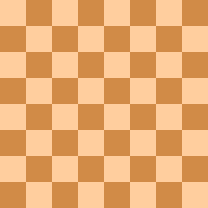King walk
| a | b | c | d | e | f | g | h | ||
| 8 |  | 8 | |||||||
| 7 | 7 | ||||||||
| 6 | 6 | ||||||||
| 5 | 5 | ||||||||
| 4 | 4 | ||||||||
| 3 | 3 | ||||||||
| 2 | 2 | ||||||||
| 1 | 1 | ||||||||
| a | b | c | d | e | f | g | h | ||
| This example uses algebraic notation. |
In chess, a king walk, also known as a king march, steel king (Dutch: wandelkoning, literally "wanderking") or fighting king, refers to occasions where the king travels up the board in the middle game or opening, often involved in a mating attack against the opposing king.[2] This is a highly unusual occurrence, since the safety of the king is considered paramount, and players are recommended to keep the king out of harm's way, at least until the endgame.[3][4] In contrast, Wilhelm Steinitz, often known as the father of modern chess, was renowned for his maxim that "the king is a fighting piece".[5][6] Dutch chess historian and author Tim Krabbé has documented over one hundred such games.[2]
Because of the rarity of such tactics, those which reap rewards for the attacking player often have brilliancy prizes bestowed upon them.[7][8] Perhaps the most famous in recent history,[9] where Nigel Short defeated Jan Timman in Tilburg in 1991, was voted as one of the hundred greatest chess games in a list compiled by FM Graham Burgess, and GMs John Nunn and John Emms.[10]
A king walk can also refer to occasions where the king travels across the board (from kingside to queenside, or vice versa) to reach a safer position.
Example games[]
- Short vs. Timman, Tilburg 1991. Alekhine Defense: Modern. Alburt Variation (B04) 1–0 Short ties up Timman's pieces and his king can advance.
- Alekhine vs. Yates, London 1922, Queen's Gambit Declined: Orthodox Defense. Main Line (D64) 1–0 Alekhine conjures up an attack in the endgame, and his king joins the fray.
See also[]
- Chess tactics
- king walk
References[]
- ^ Agadmator: Nigel Short's King March Creates a "Mental Blockage" in Chess Engines https://www.youtube.com/watch?v=jHcMY3Jvo2s
- ^ Jump up to: a b Krabbé, Tim (1985), Chess Curiosities, London: George Allen & Unwin, ISBN 0-04-794021-2
- ^ "Chess; Theory aside, the king safety is foremost", Robert Byrne, The New York Times, September 7, 1986
- ^ "Ten Tips to Winning Chess – 7. Keep your king safe" Archived 2007-08-19 at the Wayback Machine, Arthur Bisguier, United States Chess Federation website
- ^ "Wilhelm Steinitz (1836–1900)" Archived 2008-06-19 at the Wayback Machine, Jeremy Silman
- ^ "Chess; Girding the king", Robert Byrne, The New York Times, June 27, 1982
- ^ "Steel king from Utrecht", Open Chess Diary, July 11, 2003
- ^ "Steel King goes all the way", Open Chess Diary, July 4, 2007
- ^ "The outrageous king walk", Dennis Monokroussos, ChessBase, April 2, 2006
- ^ Burgess, Graham; Nunn, John; Emms, John (October 1998), The Mammoth Book of the World's Greatest Chess Games, Carroll & Graf, ISBN 978-0-7867-0587-0
External links[]
- "His Majesty steps out" capanegra, Chessgames.com
- Chess terminology